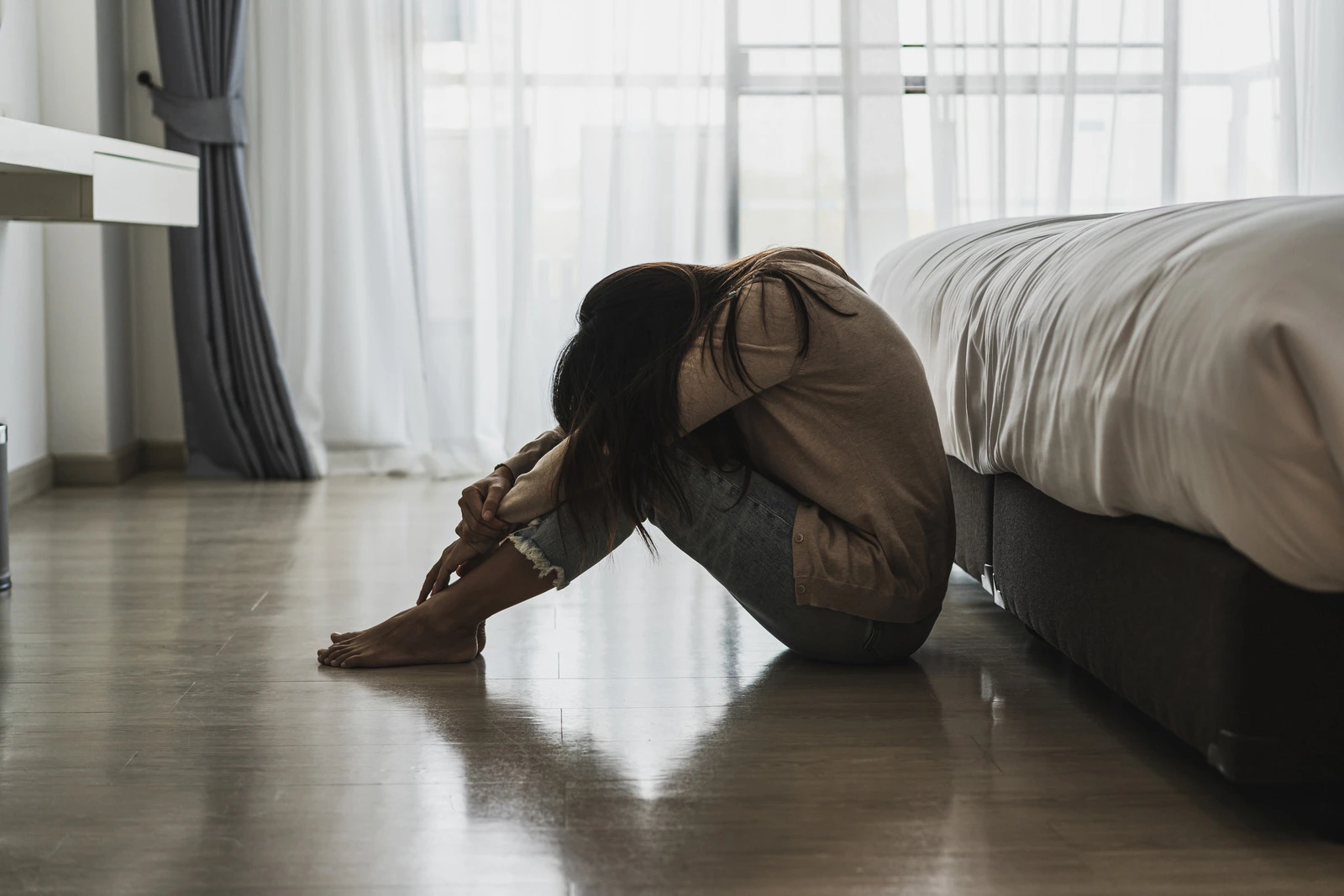Detox
Ativan Withdrawal: Symptoms, Treatment, and Management
Medically Reviewed By
Written By
Last medically reviewed October 7, 2024
Detox
Medically Reviewed By
Written By
Last medically reviewed October 7, 2024

Ativan (lorazepam) is a drug in the benzodiazepine class. It’s used to treat anxiety disorders, but it carries a risk of abuse, physical dependence, and addiction, even when it’s used as prescribed. If you take Ativan for long periods, it’s possible to become dependent and experience withdrawal if you stop taking it.
Learn more about Ativan withdrawal symptoms, treatment options, and how Ativan withdrawal is managed to avoid serious complications.
Lorazepam, sold under the brand Ativan, is a benzodiazepine medication that’s used to treat anxiety. Like other benzodiazepines, Ativan acts on the central nervous system (CNS) to produce a calming feeling and enhances the effects of the neurotransmitter gamma-aminobutyric acid (GABA).
In some cases, Ativan may be used to treat nausea and vomiting from cancer treatment or to help with the symptoms of alcohol withdrawal from alcohol use disorder.
Ativan is intended for short-term use because dependence can develop over time, which is when the body becomes used to the presence of a drug and needs it to function properly. If you stop taking it, withdrawal occurs.
The withdrawal timeline for a benzodiazepine like Ativan can be potentially dangerous or even fatal due to the potential to develop seizures during the withdrawal process. The stages of Ativan withdrawal are the acute stage and the prolonged stage.[1]
Ativan has a half-life of 10-12 hours on average, so the acute withdrawal symptoms may occur within 24 hours after the last dose and may last 3-4 days.[2] Acute withdrawal may begin with rebound symptoms like severe anxiety, high blood pressure, an increased heart rate, and problems sleeping. Some other symptoms include:[3]
Rebound symptoms are common during Ativan withdrawal, which is the temporary, enhanced return of the symptoms the drug is intended to treat, like anxiety or insomnia. Rebound anxiety or insomnia typically occurs 2-3 days after the acute withdrawal phase of detox. In some cases, people may relapse to relieve the rebound anxiety.
The protracted withdrawal syndrome occurs after the acute phase and typically lasts 10-14 days.[4] However, in people who use very high doses of Ativan, protracted withdrawal symptoms may last even longer. You may experience protracted withdrawal symptoms of anxiety, nausea, intense cravings, vomiting, headache, and a general feeling of illness. This may be known as post-acute withdrawal syndrome (PAWS).

The duration and intensity of withdrawal symptoms can depend on different factors, such as:[5]
You should never stop taking Ativan suddenly because of the risks of benzodiazepine withdrawal and the severity of the symptoms, especially if you’ve been taking it for long periods. Doctors will often recommend a taper schedule to gradually reduce the Ativan dosage to reduce the severity of withdrawal symptoms and complications.
Because of this, medical detox may be necessary. In addition to a doctor-recommended taper schedule, Ativan detox provides medical supervision to monitor your health. It provides medications to address severe withdrawal symptoms until the withdrawal process is complete.
Though Ativan is generally safe when taken as directed by a doctor, drug addiction is possible. Ativan detox can help with withdrawal management, but you may need to enter an addiction treatment program after detox to address the underlying factors of drug addiction.
Both inpatient treatment and outpatient treatment provide individualized therapy to help you overcome addiction. This could include individual therapy, group counseling, and behavioral therapies like cognitive and dialectical behavior therapy.
Ativan withdrawal is often managed with medications. Melatonin, a hormone that induces sleep, may be used for insomnia and sleep disturbances that are common with withdrawal.[6] The antidepressant Paxil (paroxetine) can ease withdrawal symptoms as well.[7]
There are no medications that are specifically intended for benzodiazepine withdrawal, however. Generally, the medications used in medical detox are intended to treat some of the symptoms, such as insomnia or anxiety. Adjusting the taper schedule can be effective in reducing the severity of symptoms.[8]
Ativan can help treat anxiety, but it has a risk of Ativan dependence and addiction. If you’ve been taking Ativan for a prolonged period, don’t stop taking it on your own. Talk to your doctor about how to stop taking Ativan safely. If you’re abusing Ativan – either on its own or with other drugs – consider medical detox and an addiction treatment program to get help for Ativan withdrawal.
Ativan has not been evaluated as a long-term medication for anxiety. It’s intended for short-term use, typically less than four months.[9] If you take Ativan for long periods, it increases the risk of physical dependence, misuse, and addiction.
The timeline and severity of Ativan withdrawal can vary from person to person, but it often lasts a few weeks. Some of the psychological symptoms can last for months or years, however. The longer you’ve taken Ativan, the longer the withdrawal symptoms last.
Quitting Ativan cold turkey is not recommended. Stopping benzodiazepines like Ativan suddenly increases the risk of experiencing withdrawal symptoms, including severe symptoms like seizures, so it’s important to reduce your Ativan dose to avoid withdrawal symptoms gradually. Speak to your doctor if you want to stop taking Ativan or start a lower dosage.
Depending on how long you’ve taken Ativan and your dosage, you may be able to stop taking it with a taper schedule from your doctor. However, medical detox is an effective way to ease the discomfort of withdrawal symptoms and reduce the risk of complications. If you have an addiction to Ativan, it’s important to undergo medical detox and an addiction treatment program to treat the behavioral aspects of your Ativan abuse.
[1] K;, V. H. H. S. (n.d.). Long-term outcome after benzodiazepine withdrawal treatment in subjects with complicated dependence. Drug and alcohol dependence. Retrieved from https://pubmed.ncbi.nlm.nih.gov/12757968/ on 2024, September 24.
[2] Ativan civ tablets rx only – food and drug administration. (n.d.-b). Retrieved from https://www.accessdata.fda.gov/drugsatfda_docs/label/2007/017794s034s035lbl.pdf on 2024, September 24.
[3] H;, P. (n.d.). The benzodiazepine withdrawal syndrome. Addiction (Abingdon, England). Retrieved from https://pubmed.ncbi.nlm.nih.gov/7841856/ on 2024, September 24.
[4] H;, A. (n.d.). Protracted withdrawal syndromes from benzodiazepines. Journal of substance abuse treatment. Retrieved from https://pubmed.ncbi.nlm.nih.gov/1675688/ on 2024, September 24.
[5] Healthdirect Australia. (n.d.). Addiction withdrawal symptoms. healthdirect. Retrieved from https://www.healthdirect.gov.au/addiction-withdrawal-symptoms on 2024, September 24.
[6] Doron Garfinkel, M. (1999, November 8). Facilitation of benzodiazepine discontinuation by melatonin. Archives of Internal Medicine. Retrieved from https://jamanetwork.com/journals/jamainternalmedicine/fullarticle/485174 on 2024, September 24.
[7] Nakao M;Takeuchi T;Nomura K;Teramoto T;Yano E; (n.d.). Clinical application of paroxetine for tapering benzodiazepine use in non-major-depressive outpatients visiting an Internal Medicine Clinic. Psychiatry and clinical neurosciences. Retrieved from https://pubmed.ncbi.nlm.nih.gov/16958945/ on 2024, September 24.
[8] Voshaar RC.Couvée JE;van Balkom AJ;Mulder PG;Zitman FG; (n.d.). Strategies for discontinuing long-term benzodiazepine use: Meta-analysis. The British journal of psychiatry : the journal of mental science. Retrieved from https://pubmed.ncbi.nlm.nih.gov/16946355/ on 2024, September 24.
[9] Ativan: Uses, dosage, side effects & warnings. Drugs.com. (n.d.-a). Retrieved from https://www.drugs.com/ativan.html on 2024, September 24.